Confused between following a Japanese diet or a Western diet? Well, here’s the differences between Japanese and Western diet in detail. What makes Japanese diet different from Western diet? And is Japanese diet more healthier than the Western diet? Read on to know all about the difference between Japanese and Western diet approaches!
The Quick answer:
Japanese Diet Vs Western Diet
The biggest difference between Japanese diet and wester diet is that Japanese diet includes a little of everything in their meals whereas the Western diet has 2-3 star ingredients around which a dish is made. Japanese diet focuses on including ingredients that are in season whereas Western diet includes a lot of processed and packaged food.
The stark differences in the diet culture of the West and the East are quite astonishing. Let’s find out what are the major difference between the Japanese and Western diet approaches in detail.
Seeing how rich in culture and deeply involved with the food the Japanese are, just listing down differences based on taste and ingredients wouldn’t do justice to explaining the difference between Japanese and Western diet.
On the surface, the differences in diet followed by the Japanese and the westerners are clear. While you’d see that a Japanese would typically eat rice, pickles, veggies and fish on a daily basis, a Westerner’s diet would consist of dairy, meat and potatoes.
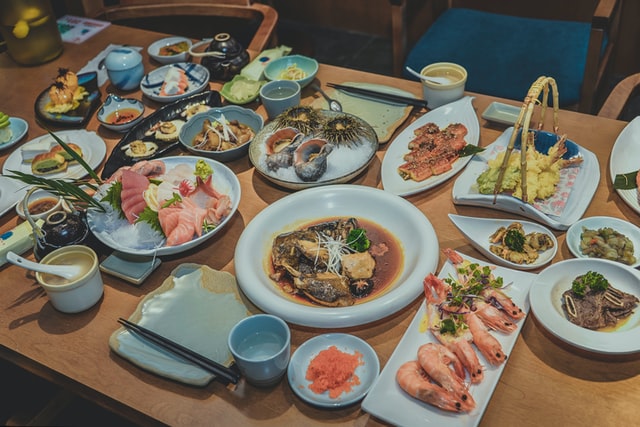
Besides, I’ve noticed quite an evident absence of dairy from a regular Japanese diet.
Flavour-wise, I’d say that the Japanese don’t go overboard. They preach and practice that it is important to limit the number of ingredients in a dish to ensure you’re really bringing out the clear-cut flavours that count.
A sophisticated palette is determined by expertly nuanced cooking styles that bring out decadent tastes in simple meals.
These were just the basic difference between Japanese and Western diet approaches. Now lets take a closer look at the differences between the food culture in Japan and the western countries.
Differences Between Japanese and Western Diet Approaches
The Japanese diet and American diet exemplify the stark differences in culinary traditions and nutritional approaches. While the Japanese diet promotes fresh, whole foods, balance, and moderation, the American diet often features processed foods, larger portions, and unhealthy ingredients. The impact on health outcomes is evident, with the Japanese diet associated with better health and longevity, while the American
Japanese Diet Is Determined By What The Body Needs
The biggest difference between Japanese and Western diet system is how they approach the constitution of each individual meal itself.
Broadly speaking, the Japanese have a rather intuitive approach whereas the Westerners focus (a bit too much) on the details.
In countries of the east, India, China and Japan, in particular, people solely depend on their bodies, the environment around them to see what the body needs to be fed.
There were no diet sciences to tell you what was wrong and what was right. Just as long as the food item you picked provided cooling to the body in the peak summer, you were good to go.
Another significant thing to be noted is that a typical Japanese teishoku (set meals) consist of the same dishes, but depending on the prevailing climate, it is made with the seasonal fruits and vegetables, be it to make soup, gravy or even pickles.
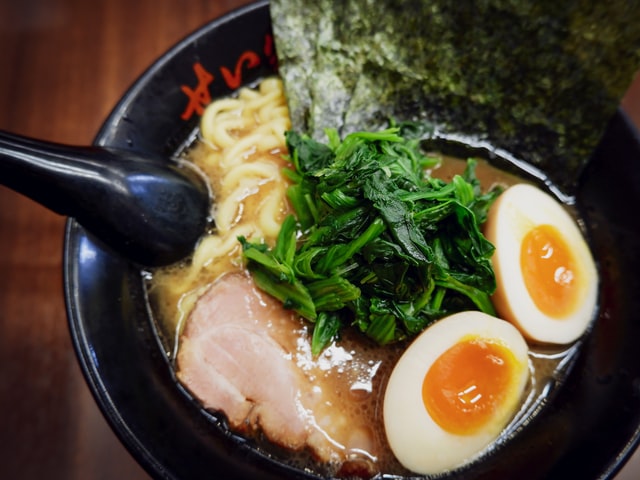
Related: The Japanese love this vegetable called Hakusai, the Japanese white cabbage. Read all about its health benefits!
The belief is that nature knows what is important for the body at particular times and ensures there’s plenty of produce of the same for consumption.
Other than that, another factor of consideration when deciding what goes into the Japanese diet is how well it digests and assimilates.
The Japanese focus more on the tangible and properties than can be experienced by the body. They need to be able to feel whether this particular food item is going to cause them to relax, or feel bloated or even feel hotter or colder than usual.
This is in complete contrast to the Western approach of keeping track of every single calorie, carbs, protein and other ‘essential’ nutrients they have ingested. Keeping track of the numbers and the number of fibres consumed in the Western approach to diet.
This works great if you’re trying to make certain changes to your body, but it can be laborious in terms of deciding what you give to the body rather than listening to what it wants.
Constantly tracking what goes inside your body has its pros and cons on the mind and body.
Related: Here’s How to cook Japanese rice in a rice cooker
Japanese Diet Is Fresh Focused
The next difference between Japanese and western diet plan is that the Japanese diet largely depends on what veggies or fruit are in-season as the Japanese people prefer home-cooked meals unlike the Westerners.
Related: Here are best Japanese cookbooks for you to make your favorite meals at home!
You’d be surprised by how much difference it can make to consume food you cooked yourself in comparison to eating fast food or packaged food you bought outside.
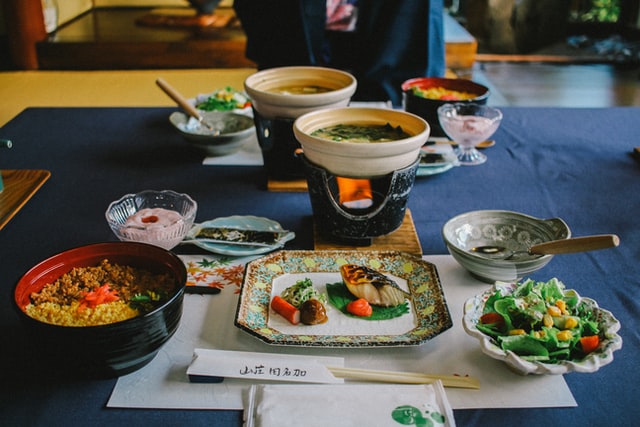
Making your own food at home means keeping in check what you put into your meal. In terms of ingredients and in terms of proportions of slightly guilty indulgences as well.
Since the Japanese are cultural people, eating at home or food made at home that is traditionally cooked just means more nutrients and fresh food.
By comparison, the Western diet culture is vastly dependent on packaged food items like frozen pizza or instant noodles, bread and other cold cuts. This has caused a lot of unhealthiness and obesity in the country.
The inevitable is happening now. American and Westernized food is entering the Japanese market paving way for rising obesity in Japan as well.
As a measure, the Japanese government decided to redesign lunches at school where the meal includes typical traditional Japanese food items.
Some Statistics on difference between Japanese and Western diet For You:
In America, CNBC conducted a survey about how many of them loved or even liked, to cook food for themselves. An appalling number of 90% were recorded saying they don’t enjoy it. 45% of the whole sample just blindly hate it, the other 45% are ambivalent, but they’d rather not cook. Even the 10% who do enjoy cooking frequently eat outside of their homes.
Heavily contrasting, only 16% of the Japanese population go out to eat food, that too only about once a week.
- Related: Rules of eating healthy in Japan
- Related: A Crash Course in Japanese Home and Kitchen
- Related: Goya: Superfood from Okinawa that reduces Blood Sugar
Japanese Diet Is Inclusive Of A Little Of Everything
The next difference between Japanese and western diet is that the Japanese believe in including a little of everything in their meals whereas the westerners have two or three star dishes per meal.
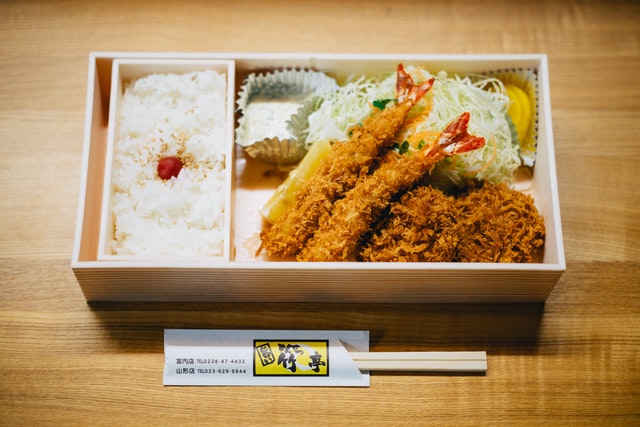
Most commonly you’ll find that the Western diet includes large portions of two to three dishes (chicken with salad and mashed potato), but the Japanese diet is completely different in that regard.
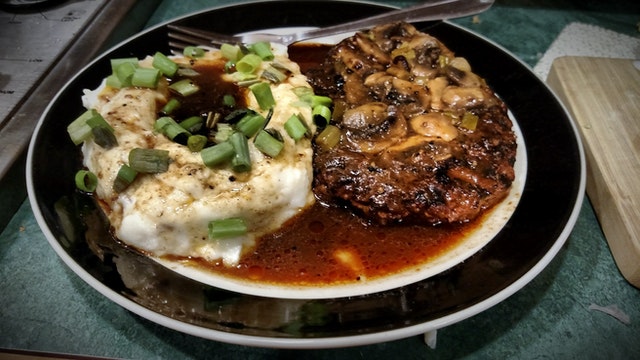
The Japanese believe in filling up their plates with more varieties of food but in smaller portions. That way they have a little of everything, nutrients wise and flavours as well. There is a good variety of rice, dish, soup, greens and side salad.
It may seem like a lot, but it's really not. In fact, despite having so many things on the plate, the average total of the calories ingested is 1000 less than what’s consumed in an average American meal.
The Western diet culture focuses on cutting out a particular food group or including a particular one in order to diet. They cut out carbs or add protein. Whereas in the Eastern, Japanese culture a more balanced approach to diet is involved every day of the week.
By eating everything on a regular basis, you are allowing your body the nutrition it needs and letting it adapt.
Digestion Is A Priority For The Japanese
The next big difference between Japanese and western diet is that the Japanese include ingredients in their meal to improve digestion.
You’ll notice that the Japanese are very mindful of what they eat. Whether they cook by themselves or get food that is served outside, the combination of foods that are eaten are always designed to optimize digestion.
This is done in simple ways like including a radish or grated cabbage garnish along with their food.
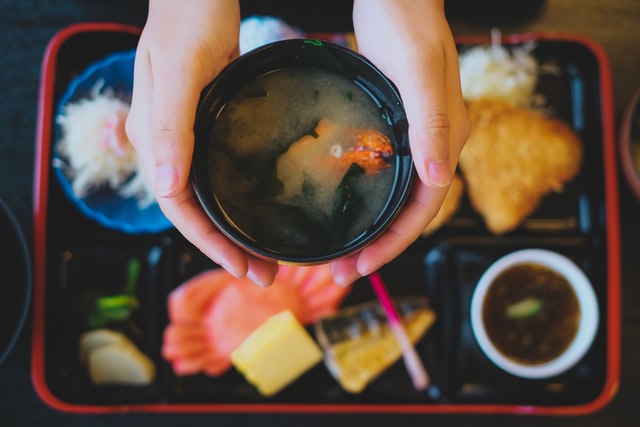
Fermented foods have a proven record of aiding the digestion process. The healthy digestive system of a Japanese person is the result of the conscious inclusion of fermented soybean items like natto and miso.
Natto in particular has a probiotic benefit that prevents blood clotting. It is traditionally eaten during breakfast.
These meals also have healthy bacteria that help the same process. So, even if the Japanese consume something big and heavy like meat or refined products like rice (which is a staple), these fermented products help digestion.
Japanese Vs Western Way Of Achieving Hydration
The next difference between Japanese and western diets is how hydration is achieved. Western diet focuses on achieving hydration mainly through water whereas Japanese diet focuses on achieving optimum hydration through including hydrating ingredients in their diet!
When you think of hydration, you think of glugging down a glass or two of water. Now, it can be quite frustrating to have not gotten the recommended 2-3 litres of water that should go in your body.
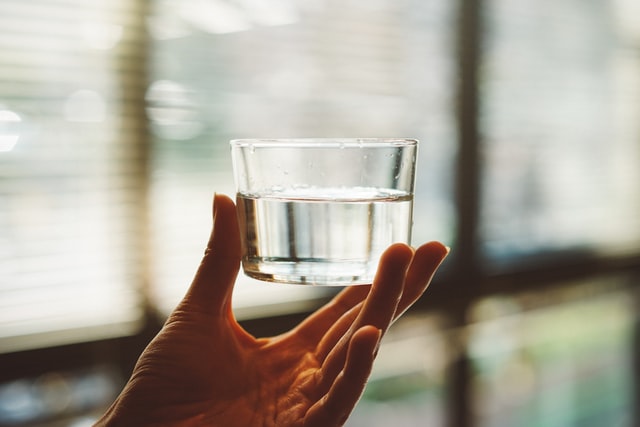
But drinking a lot of water and having it swish in your stomach is uncomfortable too.
But there are other (lesser known) ways of hydrating ourselves. The food you intake can also be classified as hydrating or dehydrating.
The Japanese eat rice that is soaked and boiled in water, eats a side of veggies with high water retention and soups that are the same.
Westerners, on the other hand, pick up a sandwich with cold cuts that have been stripped of any water there is, and resort to glugging a can of soda or a large glass of water to hydrate themselves throughout the meal.
For this very reason, you’ll notice that in Japanese restaurants, a small cup of tea before a meal suffices your hydration needs whereas, in an American restaurant, you’ll see that the customers’ glasses need to be refilled repeatedly to help them wash down their food.
In fact, according to some eastern diet philosophies, having water with food slows down the digestive process by diluting the stomach acids. Which is why you’ll see that the Japanese have very little water during their meals.
Japanese Secret Of Making Healthy Foods Tasty
The next difference between Japanese and Western diet is how the Japanese successfully have made healthy tasty encouraging everybody to eat more vegetables. Whereas kids in the western kids will probably willingly eat lettuce when it’s put in a cheesy chicken burger!
Branching out from the first point, a lot of Americans avoid eating vegetables because of the way they taste. Well, of course, the Japanese have a solution for this. Umami, their secret ingredient makes everything better.
The Japanese heavily rely on adding umami flavour to their vegetables, soy sauce, dashi and miso. This is the reason why it is so easy for the Japanese to eat healthy without actually missing out on ‘flavourful tastes’.
A world where veggies aren’t bland, hmm.
Mildly Sweet Desserts Are Preferred In Japan
The next big difference between Japanese and western diet is how they eat desserts and sweets!
It's a popular opinion that no meal is complete until you’ve had dessert. But that is not always the case for the Japanese. Of course, the Japanese love to eat desserts but they consciously avoid the heavy reliance on fatty baked goods like the ones found in the West.
For a sweet feast, the Japanese rely on fresh fruit like watermelon, matcha and red bean paste in their food and desserts instead of added sugar. Fruits in Japan are eaten as desserts because Japanese fruits are of top-quality and the farmers put in a lot of effort to produce the best tasting fruits!
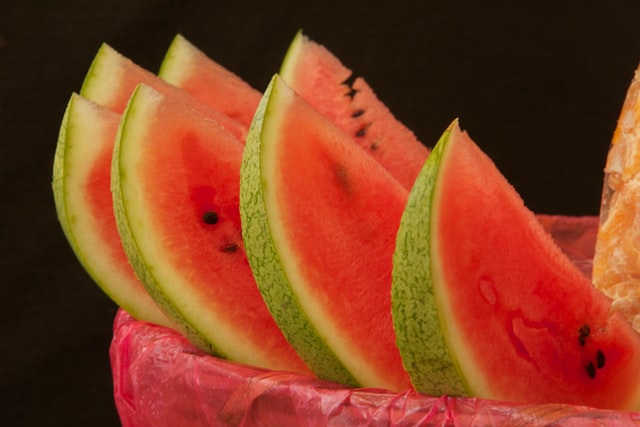
Related: why are Japanese mangoes so expensive? Find out here!
I guess, ultimately, the biggest difference between Japanese and western diet is that the Japanese listen to what their needs and the westerners look at diet in a more scientific way.
The Japanese include ingredients in their meals that help in digestion and improve health. The ultimate goal of the Japanese diet is to rebalance our mind and body by taking cues from nature. Which is why the Japanese diet includes a lot of fresh, in season produce!
Now that you know the difference between Japanese and western diet I hope that you make a conscious decision every time you prepare a meal and bring a positive change in the way your food, your body and mind.
Is Japanese food healthier than American food?
Yes, the Japanese diet is generally considered healthier than the American diet. The Japanese diet emphasizes fresh, whole foods, balanced and varied meals, smaller portion sizes, and lower consumption of processed foods, resulting in a diverse nutrient intake that supports overall health. In contrast, the American diet tends to rely more on processed and convenience foods, larger portions, and higher amounts of unhealthy fats, added sugars, and sodium, leading to an increased risk of obesity and related health issues.
How is the Japanese diet different from the American diet?
The Japanese diet differs from the American diet in terms of food choices, portion sizes, cooking methods, balance and variety, sodium and sugar intake, and cultural practices. The Japanese diet emphasizes fresh, whole foods, smaller portion sizes, and a balance of nutrients. It incorporates a wide range of vegetables, fruits, seafood, and fermented foods. In contrast, the American diet includes more red meat, processed foods, larger portions, and higher levels of unhealthy fats, added sugars, and sodium.
What is the typical Japanese diet?
Japanese diet consists of a variety of foods for a balanced meat. Japanese diet consist of fresh food that are in season. The Japanese diet doesn't contain much sugars, animal protein or fat. Instead the Japanese diet contains small portion of rice or noodles along with fish or other seafood, soy, and fresh veggies and fruits.
How is the Japanese diet different from American?
The Japanese diet consists of small portions of variety of foods like a small bowl of rice accompanied with fish, chicken or other plant-based protein like soy, beans, etc. and pickles, soup, and other vegetable-based side dishes.
Also Read



